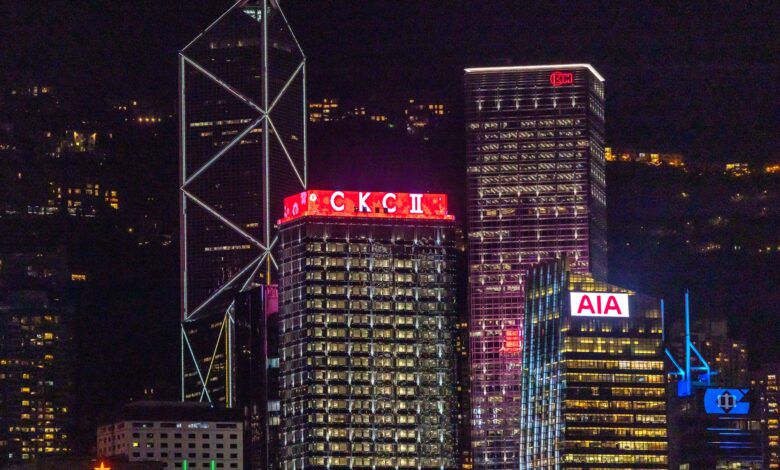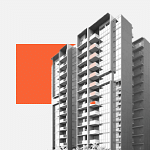Li Ka-shing’s unfilled towers show deepening Hong Kong downturn

NO ONE’S property in Hong Kong epitomises the pain in the office market better than real estate legend Li Ka-shing’s.
CK Asset Holdings’s crown jewel Cheung Kong Center in Central has been about a quarter empty for the past year while its nearby new glassy tower has just 10 per cent of its space leased.
While there are other towers in the area that have higher vacancies, the struggles of Li’s premium properties reflect the prolonged weakness in Hong Kong’s office market. The city’s vacancy rate was at a historic high of 16.7 per cent in the first quarter, according to CBRE. Office rental prices fell 35 per cent since the peak in 2019, data from CBRE show.
Cheung Kong Center II, a smaller version of CK’s headquarters building, has only a fraction of the space in its 41 floors rented since pre-leasing started last year, according to brokers who market for CK. The company did not respond to a request for comment.
CK Asset’s chairman Victor Li recently acknowledged that new demand for offices was not high in the short term, but that he was confident in the future of Cheung Kong Center II.
“After all, there are not many quality office buildings with sweeping harbour views available in the market,” Li said at an annual shareholder meeting earlier this month. “Additionally, the building is situated in the core CBD area of Hong Kong, and is among the highest-quality office buildings in the city. I don’t feel too concerned.”
A NEWSLETTER FOR YOU

Property Insights
Get an exclusive analysis of real estate and property news in Singapore and beyond.
Across the road, Henderson Land Development’s new office tower designed by Zaha Hadid Architects has been more successful in attracting tenants, though it still has about 40 per cent of the space vacant, according to the company. The landlord has recently been leasing out smaller spaces to fill up the 36-storey tower instead of the full floor deals that it announced earlier. London-based Coller Capital signed up for a partial floor with Henderson, Bloomberg News reported in February.
Both projects are expected to be available this year. There will be an additional 709,000 square feet (65,868 square metres) of new office space – the size of about nine soccer fields – completed between the second and fourth quarter of the year, according to CBRE.
Generally, new offices across the city are having a hard time signing up tenants. Commitment rates for most new buildings remained under 50 per cent in the first quarter, CBRE data show. Even the financial hub’s most resilient and sought-after towers are seeing more space become empty. Sun Hung Kai Properties and Henderson Land’s International Finance Centre I and II – housing the likes of Citadel – have seen vacancies rise to 5.5 per cent and 3.3 per cent respectively in May from full occupancy a year ago, according to a property agency.
Sun Hung Kai did not immediately respond to a request for comment on the vacancies.
The intensified competition with new supply has led landlords to become more accommodating. “Now landlords are most certainly more flexible than they have been for the last couple of decades,” said Alex Barnes, managing director at property agency JLL. Tenants have more say in the terms and conditions of the lease, and can ask for adjustments to the space, he added.
JLL expects rents to fall as much as 5 per cent in the year.
Apart from the increase in supply, the city’s office market has been hurt by international banks’ cost-cutting efforts and the slower-than-expected return of mainland Chinese companies.
A lack of investment banking deals has prompted some financial firms to shrink office space. Hong Kong’s proceeds from initial public offerings in the first quarter were the lowest since 2009, continuing a dismal run since last year when the city lagged behind Mumbai.
Bank of America cut more than one floor in Cheung Kong Centre in Central to move some of its staff to a cheaper location, Bloomberg News reported in March. Mainland Chinese companies, once the city’s most aggressive tenants leasing premium offices, are not rushing in either. They represented only 8 per cent of the new leases in the first quarter, data from CBRE show.
This all gives tenants more negotiating power. “These new developments are one of the best opportunities for Hong Kong’s occupiers” to upgrade their offices, Barnes said. BLOOMBERG





